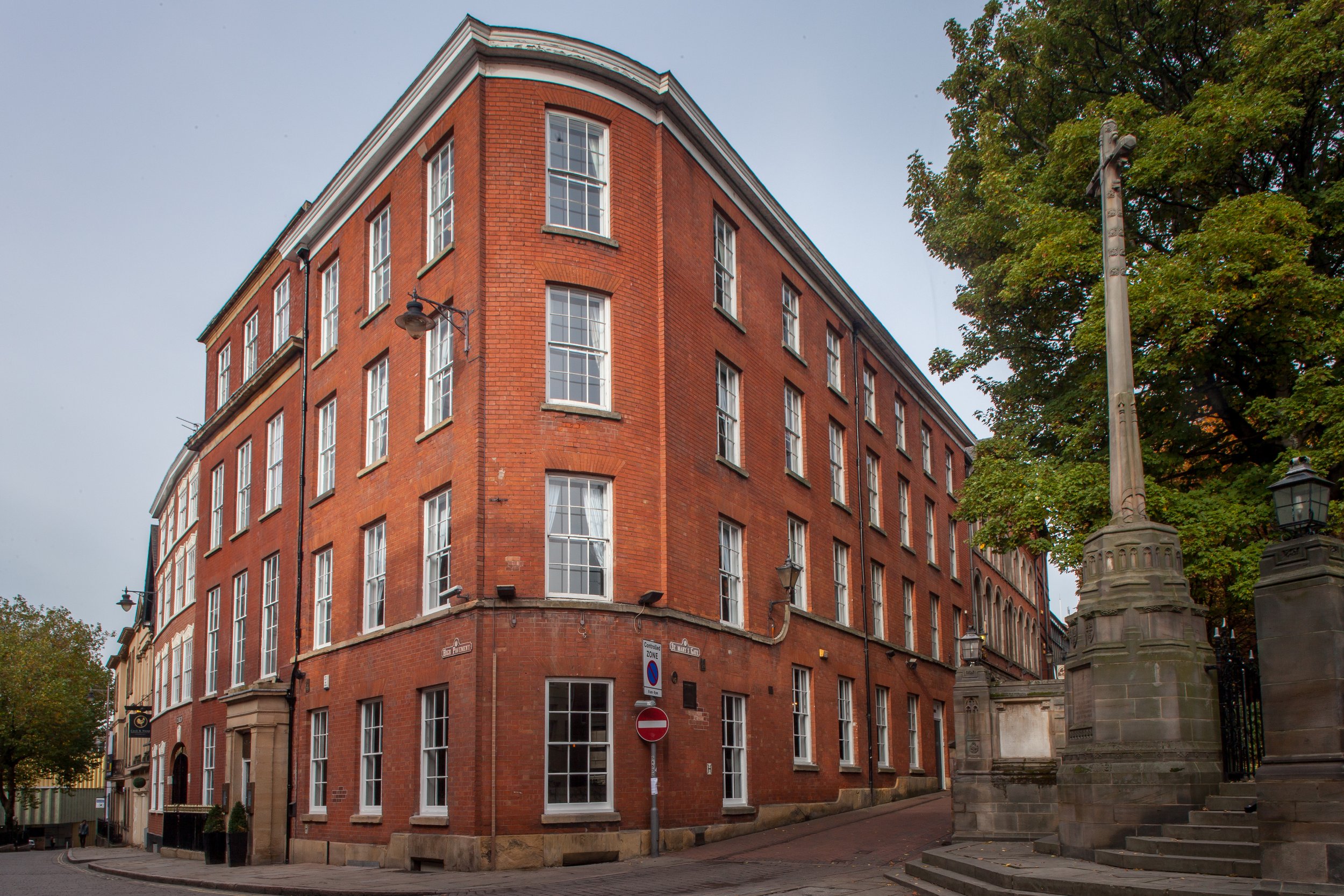history of
lace market hotel
The Lace Market is known to be the oldest area of Nottingham & has a history stretching from the troglodyte settlers, who hollowed out cave dwellings in the rock of the sandstone cliff to the commercial, residential & leisure area of today.
The town developed around this settlement during Anglo-Saxon times, when it became known as Snottingham, which later became Nottingham.
As the town became more important its street patterns developed, & despite the fact that the earlier buildings no longer survive, the street patterns remain very similar to how they were in the Middle Ages.
Nottingham continued to prosper during the Tudor period, & its prosperity can still be judged by the elegance and splendour of the houses being built around St Mary’s & the Pavements.
The area around St Mary’s Church continued to develop as an elegant residential district during the seventeenth and eighteenth centuries, with buildings such as Willoughby House (which is now the site of our hotel) being built for nobility & rich merchants. The trade & industrial side of the town also developed, with it rapidly becoming a centre for the hosiery industry during the eighteenth century.
NUMBERS
25-31
The hotel as it now is made of of four original buildings - Number 25, 27, 29 & 31
Number 31, nearest St Mary’s Church, was the house of the Bugge family, named Bugge Hall, prominent Nottingham lace merchants. Ralph Bugge & his family lived here during the fourteenth century. They ended up moving to Willoughby-on-the-Wolds & changing their family name to Willoughby. Ralph then became the founder of the great Willoughby family which, in Queen Anne’s reign, were ennobled & became the Lords Middleton of Wollaton Hall & elsewhere. Bugge Hall was turned into The Old Angel Pub, which stood on this site until the late 1800s where it was knocked down and rebuilt, combining with number 29 to be come a lace mill.
It was the time of the Industrial Revolution & astute businessmen realised that mechanisation was the future. The Lace Mill that stood on this site began to develop its commercial side too. The lace would be produced in the ‘top shops’ or top floors with large windows, and then displayed in the downstairs showrooms to buyers from the world of fashion and domestic furnishing. Nottingham Lace became the byword for machine-made lace & while some factories made a very high-grade fabric, a staple of much of the industry was the lace curtain trade. The further introduction of the railway in Nottingham in 1848, made the trade much easier to develop and extend.
Number 25 & 27 has been the site of a public house for nearly 200 years. In 1832 Joseph Pearson opened the County Tavern. It was renamed the Cock & Hoop pub in around 2003 & the accommodation above the pub became hotel rooms & the buildings were internally joined.
Unfortunately, the lace industry fell into decline after the First World War & many of the warehouses were subdivided and let into small textile firms & offices. In 1929 the building was used as offices for the City Council Medical Officer’s, then as the City’s Probation Office. However minimal rents of these buildings and lack of maintenance led to very run-down conditions by the 1960’s.
The building was then left unused for a decade prior to being purchased in 1996 by a Nottingham family for redevelopment, creating the first Lace Market Hotel. The late 1980’s and early 1990’s saw the beginning of the re-gentrification of the Lace Market, as new businesses moved into the area. This is all thanks to Mich Stevenson OBE, who has spent his whole life championing Nottingham.
With long-since abandoned buildings in the Lace Market area & with major structural repair works needed, there was talks about the whole area being demolished. However in 1994 Mich founded Lace Market Heritage Trust and intervened. After 18 months of tireless effort by the new team they first sought to preserve the Shire Hall building, former county prison, on High Pavement. The building was converted to what it is now the Galleries of Justice.
In 1998 Mich was awarded an OBE & the city has him to thank for the survival of some of its most iconic buildings.
lace
market
hotel
The Lace Market continued to thrive for many years & became the go to place for people to stay in Nottingham. In 2014 it was purchased by a private investor, closing briefly whilst it was refurbished & then reopend in October 2015.
In 2022 more work was carried out to add 9 additional bedrooms & refurbish the Cock & Hoop
We still remain independently owned & operated & are delighted to continue to be Nottingham’s Premier Boutique Hotel





